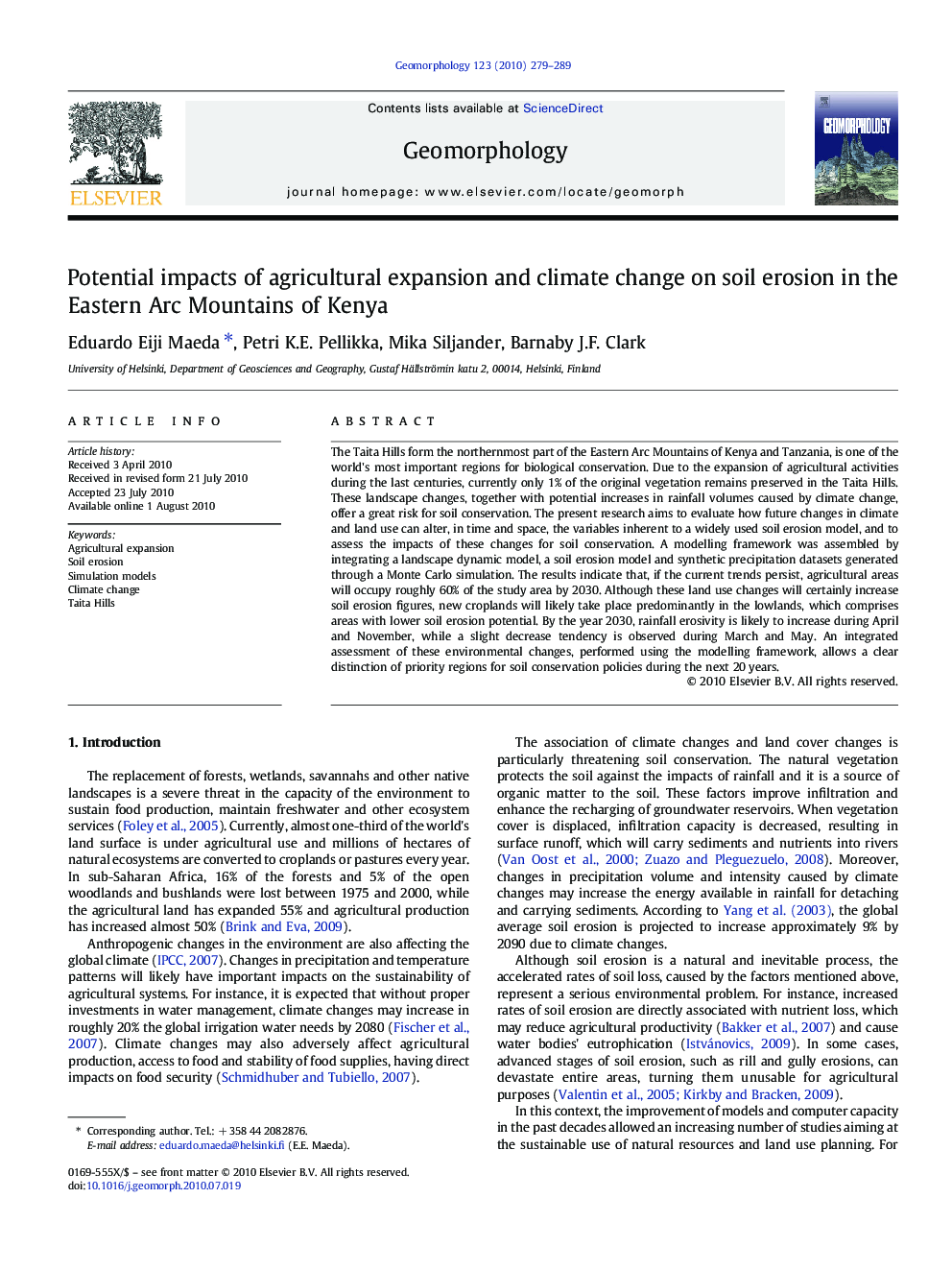| Article ID | Journal | Published Year | Pages | File Type |
|---|---|---|---|---|
| 4685867 | Geomorphology | 2010 | 11 Pages |
The Taita Hills form the northernmost part of the Eastern Arc Mountains of Kenya and Tanzania, is one of the world's most important regions for biological conservation. Due to the expansion of agricultural activities during the last centuries, currently only 1% of the original vegetation remains preserved in the Taita Hills. These landscape changes, together with potential increases in rainfall volumes caused by climate change, offer a great risk for soil conservation. The present research aims to evaluate how future changes in climate and land use can alter, in time and space, the variables inherent to a widely used soil erosion model, and to assess the impacts of these changes for soil conservation. A modelling framework was assembled by integrating a landscape dynamic model, a soil erosion model and synthetic precipitation datasets generated through a Monte Carlo simulation. The results indicate that, if the current trends persist, agricultural areas will occupy roughly 60% of the study area by 2030. Although these land use changes will certainly increase soil erosion figures, new croplands will likely take place predominantly in the lowlands, which comprises areas with lower soil erosion potential. By the year 2030, rainfall erosivity is likely to increase during April and November, while a slight decrease tendency is observed during March and May. An integrated assessment of these environmental changes, performed using the modelling framework, allows a clear distinction of priority regions for soil conservation policies during the next 20 years.
